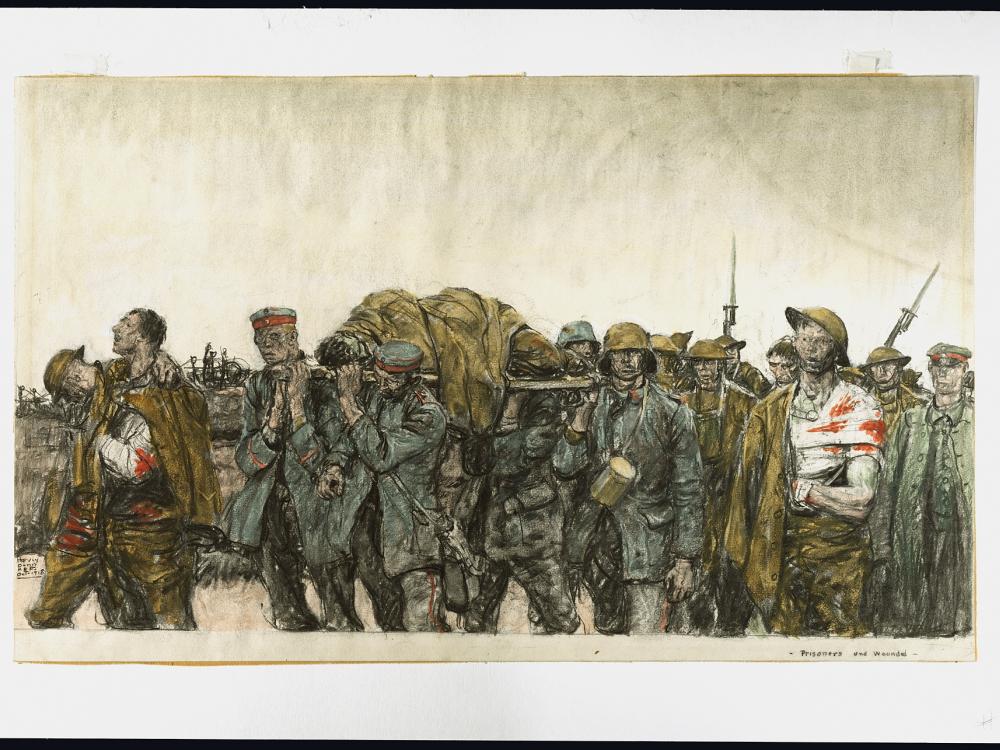

The Human Cost
Apr 06, 2017

Apr 06, 2017
The AEF artists attempted to capture as full a picture of the war as possible. That of course included the human cost of the conflict, for both military personnel and civilians. During World War I, the battlefield cut through villages and homes and displaced local people to an unprecedented extent.
The artists covered the war’s occupation and destruction of towns and villages, and the refugees that created. The taking of prisoners and the wounds of war were other frequent subjects. Although the full reality of the suffering and human loss did not appear in their art, they did attempt to leave a record of the care given the wounded and the memory of the lost.
Painting by Harvey Thomas Dunn (oil on canvas, 1918)
On the Wire
Harvey Thomas Dunn
Oil on canvas, 1918
The Prisoner by Harvey Thomas Dunn, Oil on canvas, 1918
The Prisoner
Harvey Thomas Dunn
Oil on canvas, 1918
Prisoners and Wounded by Harvey Thomas Dunn, Watercolor, charcoal, and pastel on paper, October 1918
Prisoners and Wounded
Harvey Thomas Dunn
Watercolor, charcoal, and pastel on paper, October 1918
This wheelchair was used during World War I, a symbol of the impact of war on individuals. On display in the temporary exhibition Artist Soldiers. Lent by Association Soissonnais 14-18
Wheelchair
This wheelchair was used during World War I, a symbol of the impact of war on individuals. Millions were involved and affected by the First World War, each with a unique story.
Lent by Association Soissonnais 14-18
The AEF WWI war art collection currently is held by the Smithsonian’s National Museum of American History, Division of Armed Forces History, from which the artworks in this exhibition are on loan.


We rely on the generous support of donors, sponsors, members, and other benefactors to share the history and impact of aviation and spaceflight, educate the public, and inspire future generations. With your help, we can continue to preserve and safeguard the world’s most comprehensive collection of artifacts representing the great achievements of flight and space exploration.
We rely on the generous support of donors, sponsors, members, and other benefactors to share the history and impact of aviation and spaceflight, educate the public, and inspire future generations. With your help, we can continue to preserve and safeguard the world’s most comprehensive collection of artifacts representing the great achievements of flight and space exploration.